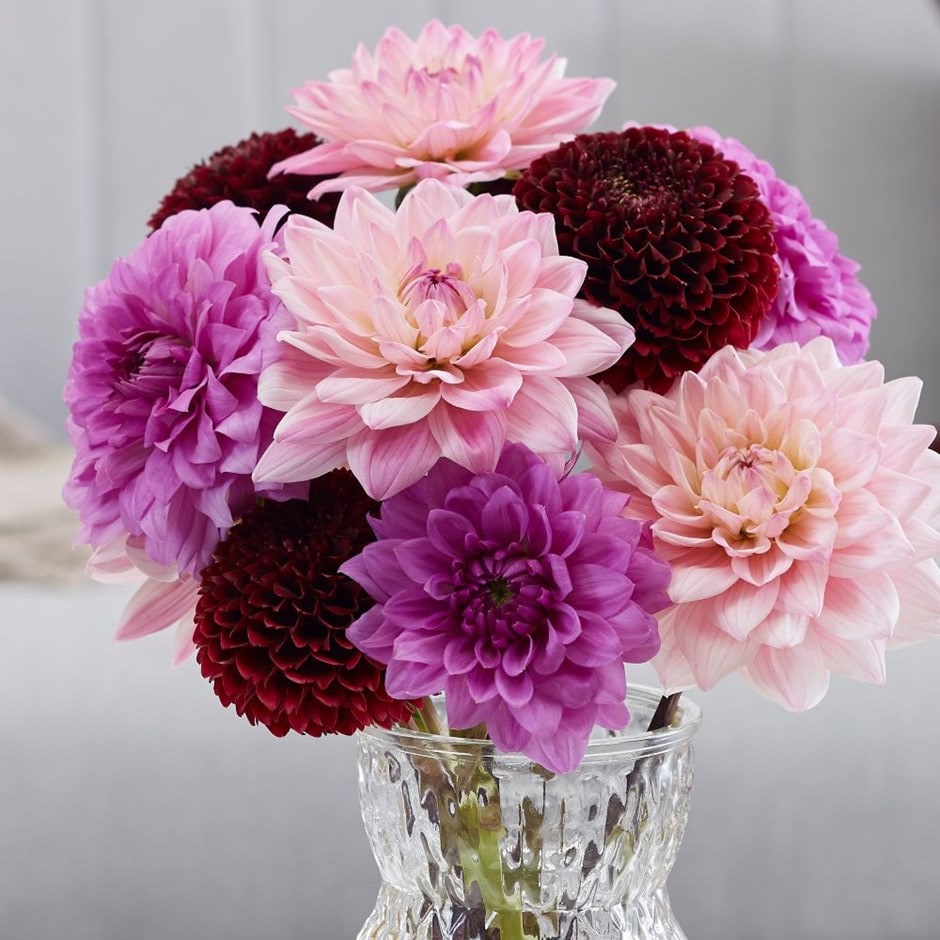Raspberry ripple dahlia collection
dahlia collection
- Position: Full sun
- Soil: Moderately fertile, moist, well-drained soil
- Rate of growth: Average
- Flowering period: July to September
- Hardiness: Half hardy (may need winter protection)
Extend that summer season 'wow' with our decadent 'Raspberry Ripple' collection of stunning dahlias. The soft lilac-pink petals of the waterlily-esque flowers blend gracefully with the claret-black ball-shaped blooms, while the pastel pale pink adds a glamorous and romantic touch. Each flower head stands out with its unique shape and complementary colours, creating a mesmerising sight that will surely captivate a vase or late summer border.
In each collection you will receive one tuber of each of the following cultivars:
- Dahlia 'Blue Boy': Well-formed lilac-pink flowers provide colour in the border for many months from midsummer. For an outstanding display mix it with most shades of pink or purple, as well as silvers and blues. Grows to 90cm.
- Dahlia 'Jowey Mirella': Forming neatly symmetrical, claret-black heads, this ball dahlia will add a bold shot of rich colour to the late summer palette. They are also ideal for cutting as the small to mid-sized flowers, which last well in the vase, top long, strong stems. Grows to 1m.
- Dahlia 'Karma Prospero': The ray florets (petals) of this beautiful decorative dahlia are subtly streaked with creamy white and pale lilac-pink, so the overall effect is very soft. It's a dream to mix with other pastel shades as well as stronger pinks and plum. Grows to 80cm.
Dahlia tubers can be planted outside after frost, or started off in pots under glass in late winter to early spring. Plant them horizontally approximately 12cm deep, making sure the ‘eyes’ are uppermost. Allow enough room between each tuber so the plants can grow and spread to their full size without being overcrowded. While in growth, provide a high-nitrogen liquid feed each week in June, then a high-potash fertiliser each week from July to September. Stake with canes or brushwood if it becomes necessary. In mild areas, leave them in situ over winter, but protect the crown with a generous layer of dry mulch. In colder areas, carefully lift and clean the tubers once the first frosts have blackened the foliage and allow them to dry naturally indoors. Then place the dry tubers in a shallow tray, just covered with slightly moist potting compost, sand or vermiculite and store in a frost-free place until planting out again.
- Humans/Pets: Ornamental bulbs - not to be eaten

